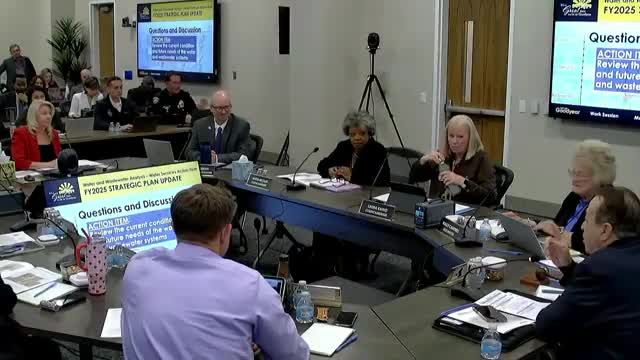City Council evaluates turf conversion program to enhance water conservation efforts
April 18, 2025 | Goodyear, Maricopa County, Arizona
Thanks to Scribe from Workplace AI , all articles about Arizona are free for you to enjoy throughout 2025!

This article was created by AI using a video recording of the meeting. It summarizes the key points discussed, but for full details and context, please refer to the video of the full meeting. Link to Full Meeting
One of the key proposals discussed was the potential for replacing traditional grass lawns with artificial turf. Council members noted that "a drop saved is a drop we don't have to pump," underscoring the urgency of finding ways to minimize water usage. Currently, Goodyear offers a rebate program for residents who wish to convert their grass to low-water-use landscapes, but there is a desire to expand this initiative further. Officials mentioned the possibility of incentivizing homeowners and homeowners' associations (HOAs) to make the switch, thereby promoting water conservation across the community.
The conversation also touched on the concept of "non-functional turf," which refers to grass areas that serve no practical purpose, such as those in medians or on slopes. Council members expressed a commitment to updating design guidelines to prohibit such turf installations, ensuring that grass is only used in areas where it can be actively enjoyed, like parks and playfields.
In addition to residential efforts, the council acknowledged the ongoing collaboration with HOAs, which have been actively converting their landscapes to more sustainable options. The conservation staff confirmed that these associations are eligible for financial assistance to support their transition to water-efficient landscaping.
As the meeting concluded, council members reiterated the importance of making water conservation a top priority for the city. With growth on the horizon, the discussions set the stage for a future where Goodyear not only thrives but does so with a mindful approach to its precious water resources. The commitment to sustainability and innovation in landscaping practices reflects a broader trend in urban planning, aiming to balance development with environmental stewardship.
Converted from City Council Work Session - 03/03/2025 meeting on April 18, 2025
Link to Full Meeting
Comments
View full meeting
This article is based on a recent meeting—watch the full video and explore the complete transcript for deeper insights into the discussion.
View full meeting